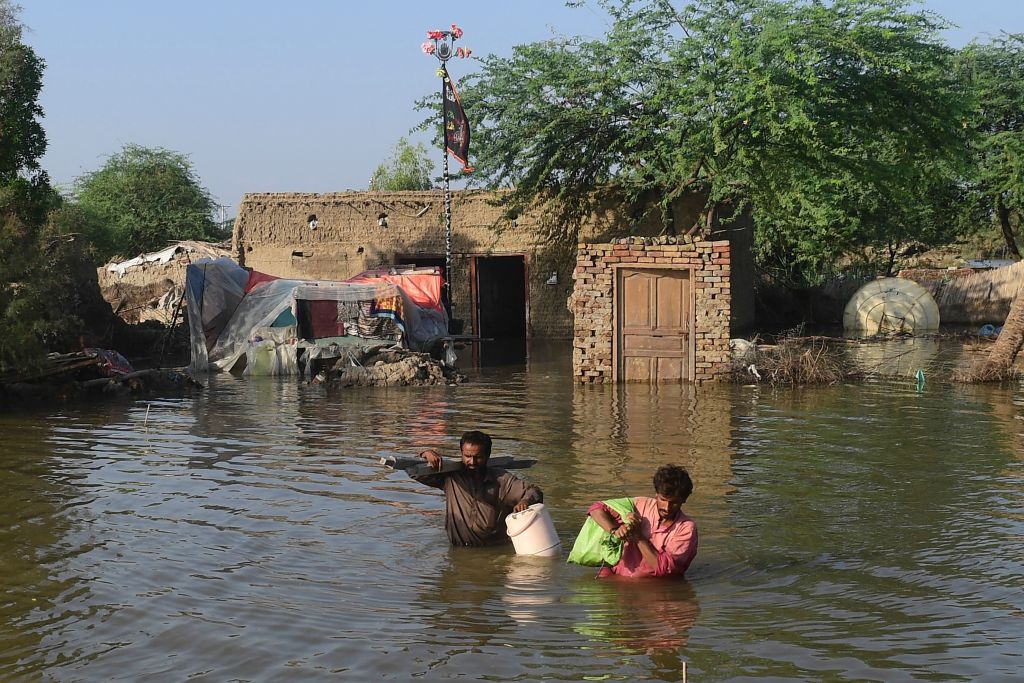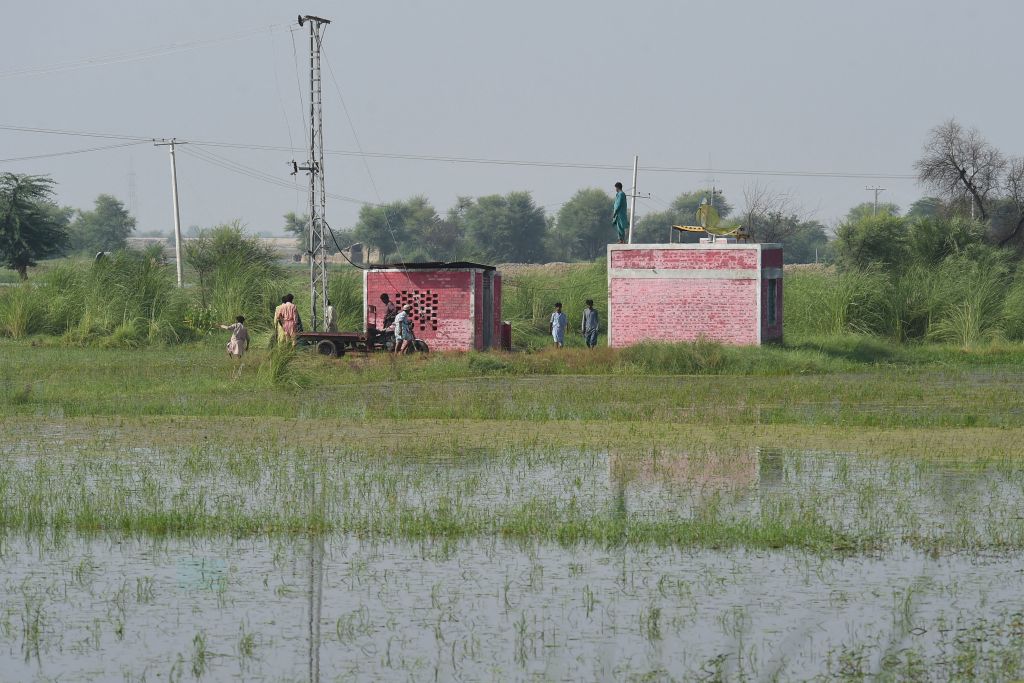
The toll of extreme flooding on Pakistan’s food security is becoming apparent: large swathes of farmland under water, crops and food stocks washed away, homes and livelihoods wiped out.
The government warned that a food security crisis is looming. Rains and deadly floods have damaged rice and cotton crops, along with vegetables like onions and tomatoes. They also threaten wheat planting in the coming months at a time when the world can ill afford another disruption to grain supply.
Global prices of kitchen staples soared following Russia’s invasion of Ukraine, driving food inflation to a record. The catastrophic flood, which is estimated to cost the economy $10 billion, is another hit to Pakistan that’s already battling an economic crisis. The damage to food supplies could boost Pakistan’s need for imports and increase the pressure on global agricultural markets.
“The agricultural sector is in turmoil. The cotton crop and vegetables are completely wiped out in many key areas,” said Ahmad Jawad, vice president of Pakistan Businesses Forum, who grows wheat, maize, citrus and sugarcane. “Wild weather just can’t give us a break. First the heat wave, now floods.”
Pakistan, among the most vulnerable globally to climate change according to the United Nations, has seen the highest rainfall in at least three decades. About a third of the country is currently flooded, the government estimates, and more than 1,100 people have lost their lives.
As much as half of Pakistan’s cotton crop has been damaged by torrential rains, Planning Minister Ahsan Iqbal said on Tuesday, citing preliminary estimates. Pakistan is the fifth-largest cotton producer, accounting for 5% of global output. The damage could further shrink the world’s cotton supply.
Food costs have jumped in Pakistan, with tomatoes surging five times and onions tripling since last month. Steps are being taken to import vegetables and other items from Iran and Afghanistan. Pakistan is also considering a temporary land route to allow duty-free shipments from arch-rival India.
“The two neighboring countries have issues but a humanitarian crisis comes first,” Jawad said. “India has a surplus of vegetables so it’s a win-win.”

Food aid to Pakistan
International aid is also trickling in. The World Food Programme is working to expand food assistance to Pakistan, aiming to reach about half a million people in the badly-hit provinces of Balochistan and Sindh. However, distributions are hampered as floodwaters are restricting access across the country.
More than 100 bridges and about 3,000 kilometers of roads have been damaged or destroyed, almost 800,000 farm animals have perished, and two million acres of crops and orchards have been hit, according to the United Nations.
“The floods have broken multiple bridges so supplies from Iran will not reach Pakistan’s main population center in Punjab province. Indian imports are needed to help bring prices down,” Jawad said.
Pakistan already has one of the fastest inflation rates in the region, with consumer price gains rising to a 14-year high of almost 25% in July. The August print is due for release on Sept. 1.
Sowing next year’s wheat crop, which starts in October, will be another challenge. Pakistan is already in talks with Russia over importing wheat, Prime Minister Shehbaz Sharif said last month in parliament. Even before the floods, the country was facing a wheat shortage of about 2.6 million tons.
—With assistance from Ruchi Bhatia and Kevin Dharmawan
More Must-Reads from TIME
- Cybersecurity Experts Are Sounding the Alarm on DOGE
- Meet the 2025 Women of the Year
- The Harsh Truth About Disability Inclusion
- Why Do More Young Adults Have Cancer?
- Colman Domingo Leads With Radical Love
- How to Get Better at Doing Things Alone
- Michelle Zauner Stares Down the Darkness
Contact us at letters@time.com